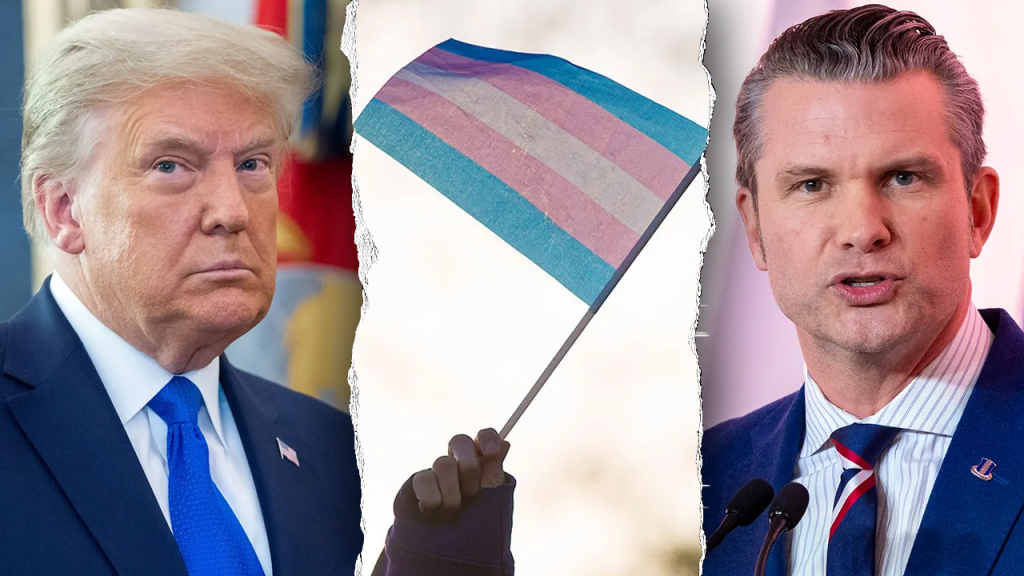In a significant decision, the Supreme Court has temporarily lifted a lower court’s injunction, allowing the Pentagon’s transgender military ban to proceed. This ruling comes as the Trump administration continues to implement changes to policies set during the Biden era. The case at hand, Shilling v. United States, raises critical questions about military readiness and the inclusion of transgender individuals in the armed forces. With justices divided on the issue, the Supreme Court’s majority opinion marks a pivotal moment in the ongoing debate regarding LGBTQ+ rights within military service.
| Article Subheadings |
|---|
| 1) Overview of the Ban and Supreme Court Decision |
| 2) Implications for Transgender Service Members |
| 3) Political Reactions and Comments |
| 4) Historical Context of Transgender Military Policies |
| 5) Future Outlook and Potential Legal Challenges |
Overview of the Ban and Supreme Court Decision
The case of Shilling v. United States has become a focal point for discussions surrounding the Trump administration’s policy changes regarding transgender individuals serving in the military. The Supreme Court’s recent decision allows the ban to take effect, reflecting the administration’s intent to curtail what they describe as a diversity and inclusion agenda that jeopardizes military readiness. This decision has added fuel to a contentious national debate over military policy and LGBTQ+ rights, drawing attention from various advocacy groups and political leaders.
Implications for Transgender Service Members
The lifting of the injunction against the transgender military ban significantly impacts current and prospective transgender service members. This policy mandates that transgender individuals must either serve in their biological sex or face disqualification from military duties. The decision raises numerous concerns regarding the psychological and physical well-being of those who identify as transgender and desire to serve. Critics argue that this policy may discourage qualified individuals from joining or remaining in the military, thus affecting overall military efficacy.
Political Reactions and Comments
Political leaders across the spectrum have responded vehemently to the Supreme Court’s ruling. Advocates for LGBTQ+ rights have expressed their disappointment and condemnation, suggesting that the decision represents a setback for civil rights. Conversely, supporters of the ban see it as a necessary measure to ensure focus on military readiness. Influential figures have begun to voice their positions, revealing a deep divide within the political landscape regarding inclusion and the rights of service members.
Historical Context of Transgender Military Policies
The history of transgender individuals serving in the U.S. military is fraught with challenges and reversals in policy. In 2016, the Obama administration lifted the ban against transgender service members, marking a significant step toward inclusion. However, the Trump administration’s efforts to reinstate the ban have reignited debates over military protocol and personal rights. This historical backdrop informs current discussions, as many reflect on past policies and their socio-political ramifications.
Future Outlook and Potential Legal Challenges
Looking ahead, the decision by the Supreme Court is likely to pave the way for further legal challenges from advocacy groups who oppose the ban. The possibility of renewed litigation could result in a lengthy legal battle that may eventually lead back to the Supreme Court’s docket. Observers are closely monitoring how the administration will implement the ban and the potential ramifications for military recruitment and retention.
| No. | Key Points |
|---|---|
| 1 | The Supreme Court has allowed the Pentagon’s transgender military ban to take effect. |
| 2 | The ruling is part of a larger effort to reverse policies established during the Biden administration. |
| 3 | Transgender service members face uncertainty regarding their participation in the military. |
| 4 | Political divisions are deepening as responses from leaders across the spectrum are vocalized. |
| 5 | Future lawsuits may emerge as advocacy groups challenge the legality of the ban. |
Summary
The Supreme Court’s decision to lift the injunction against the Trump administration’s transgender military ban marks a significant juncture in the ongoing debate surrounding LGBTQ+ rights within military service. With implications affecting service members and prospects for future legal challenges, the ruling is poised to influence not only military policy but also broader societal discussions on inclusion and civil rights.
Frequently Asked Questions
Question: What is the significance of the Supreme Court’s decision on the transgender military ban?
The decision allows the ban to take effect, impacting transgender individuals who wish to serve in the military and reigniting debates about inclusion and military readiness.
Question: How did the Trump administration justify the transgender military ban?
The administration argued that the policy was necessary to ensure military readiness and operational effectiveness, stating that inclusion efforts under previous administrations were detrimental.
Question: What could be the potential ramifications for transgender service members following this ruling?
Transgender service members may face disqualification from military service or psychological distress, which could deter them from serving and reduce overall military effectiveness.
